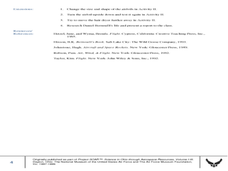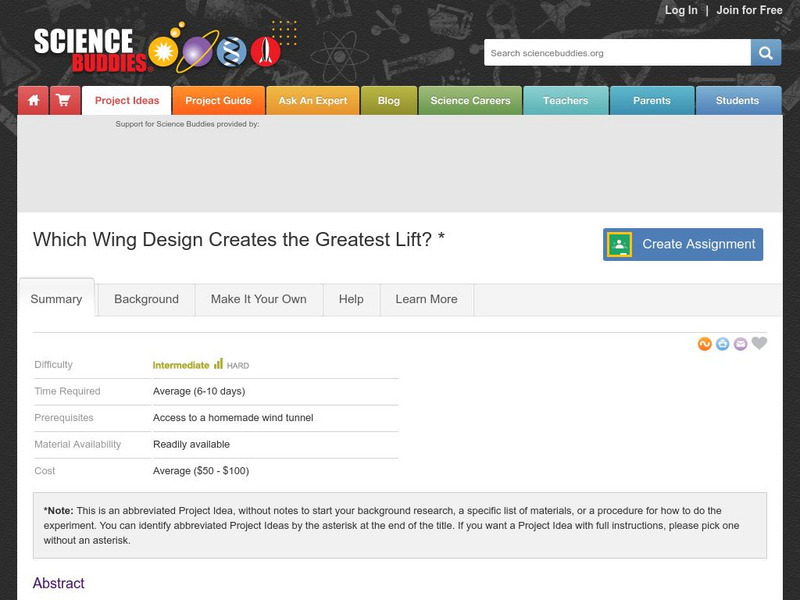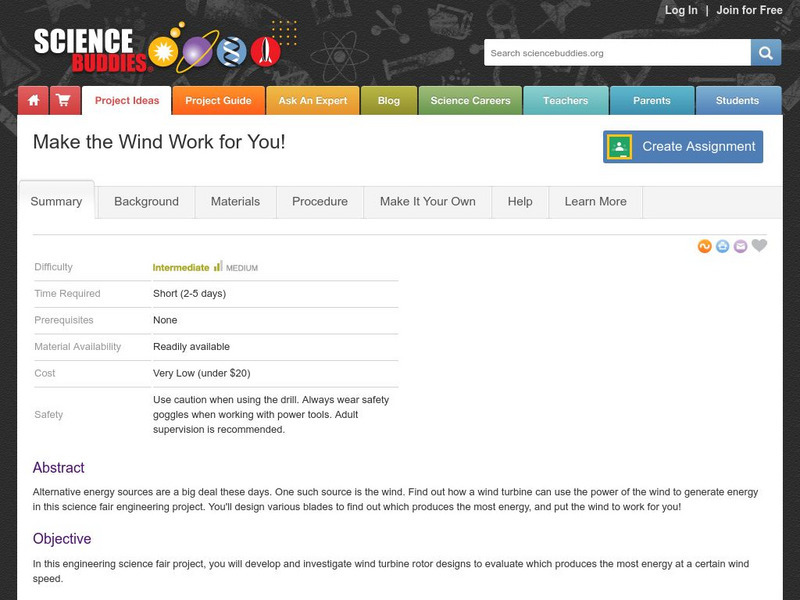Curated OER
An Uplifting Experience
Fifth graders conduct flight experiments. In this uplifting experience lesson, 5th graders build an airfoil and place in a variety of conditions to observe the results of lift and force in flight, as well as angle of attack. Students...
Curated OER
100 Years of Flight
Students investigate Bernoulli's principle of air pressure and how it
relates to the lift of an airplane. Students identify various Aeronautical vocabulary terms. Students construct a paper glider and experiment with the control surfaces...
Curated OER
Using 3-D Models for Code Validation with FoilSim
Students use FoilSim to complete the activity to create tables of data sets comparing the lift values for a 3-D model of a symmetrical wing section to the values predicted by the FoilSim software.
PBS
Pbs Learning Media: Aerodynamics: What Causes Lift?
How does an airplane stay aloft when upside down? This media-rich essay from the NOVA Web site offers an explanation based on Newton's third law of motion.
Science Buddies
Science Buddies: Which Wing Design Creates the Greatest Lift?
Airplane wings do not all have the same design. With this Science Buddies project you can design your own wings to see which offers the greatest lift. The Science Buddies project ideas are set up consistently beginning with an abstract,...
Science Buddies
Science Buddies: Winglets in Wind Tunnels
Have you noticed the little wing projections on the wings of jets? This Science Buddies project helps you understand whether these fins help stabilize airplanes. The Science Buddies project ideas are set up consistently beginning with an...
Science Buddies
Science Buddies: Make the Wind Work for You!
Find out how a wind turbine can use the power of the wind to generate energy in this science fair engineering project. You will get to design various blades to find out which produces the most energy, and at what wind speeds they are...
Smithsonian Institution
Smithsonian Learning Lab: Airplanes and Airports: How to Take Off Without Ever Leaving the Ground
Smithsonian Education presents "Airplanes and Airports: How to Take Off Without Ever Leaving the Ground." Teachers can download this teaching package that discusses airplanes and airports. Included in the discussion are the forces of...
South Carolina Educational Television
Know It All: Lift | Nasa Online
An upward force called lift acts on the airplane and opposes the downward forces of gravity. The lift force allows the airplane to get off the ground and stay in the air. Watch the simulation to see how this works.
Other
Desktop Aeronautics, Inc.: Airfoils
This chapter from an online demonstration textbook discusses airfoils. Basic concepts are explained, as well as complex equations and diagrams.
TeachEngineering
Teach Engineering: Windy Tunnel
The purpose of this activity is to demonstrate Bernoulli's Principle as it relates to winged flight. The students will use computers to see the influence of camber and airfoil angle of attack on the lift.
Other
All Star: Airfoils
The basic theories of aeronautics are explained through several airfoil activities and animations. Click on Level 2 or 3 for an easier reading level.
Teachers TryScience
Teachers Try Science: Wingin' It
Learn about the Bernoulli effect by building an airplane wing, or airfoil, and making it fly.
University of Minnesota
The Physics of Flight: Bernoulli's Principle
Discusses air flow around the wing of a plane and its effect upon the lift and drag forces. Focuses on the application of Bernoulli's principle to wing design and the subsequent airfoil shapes.











